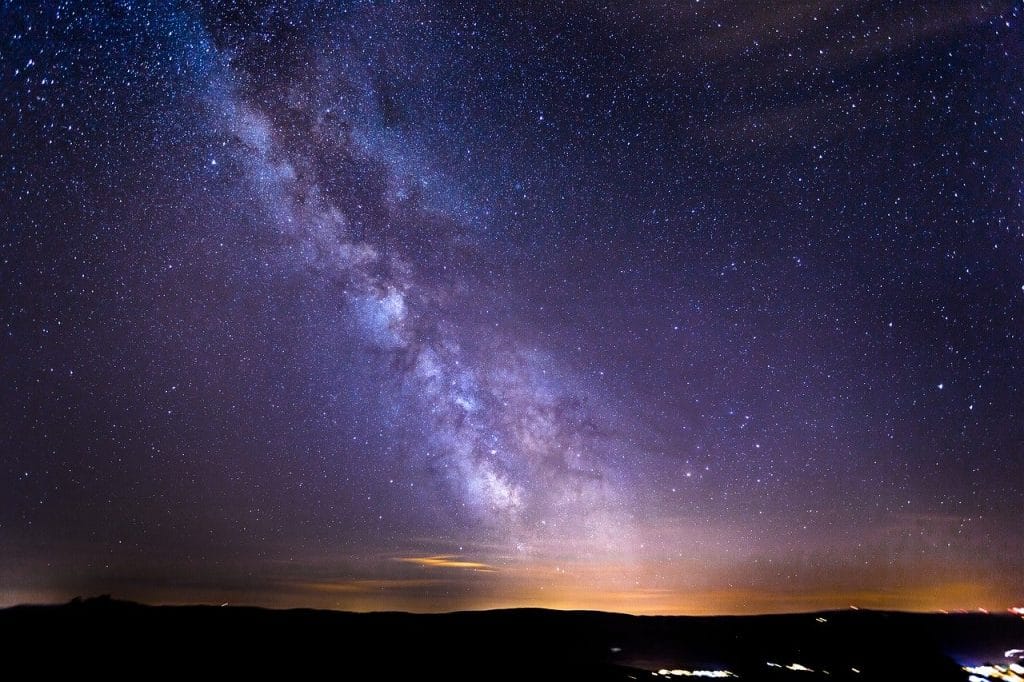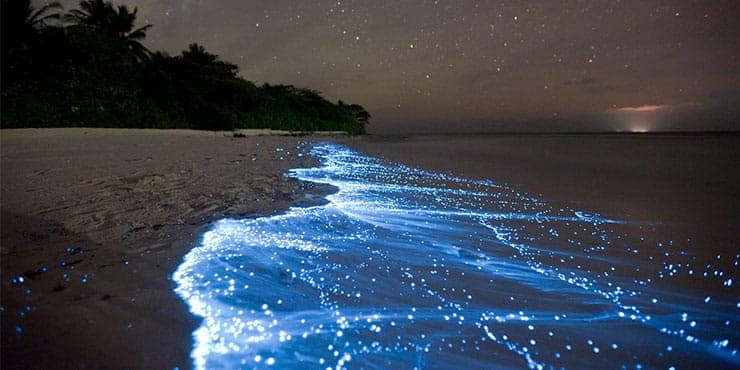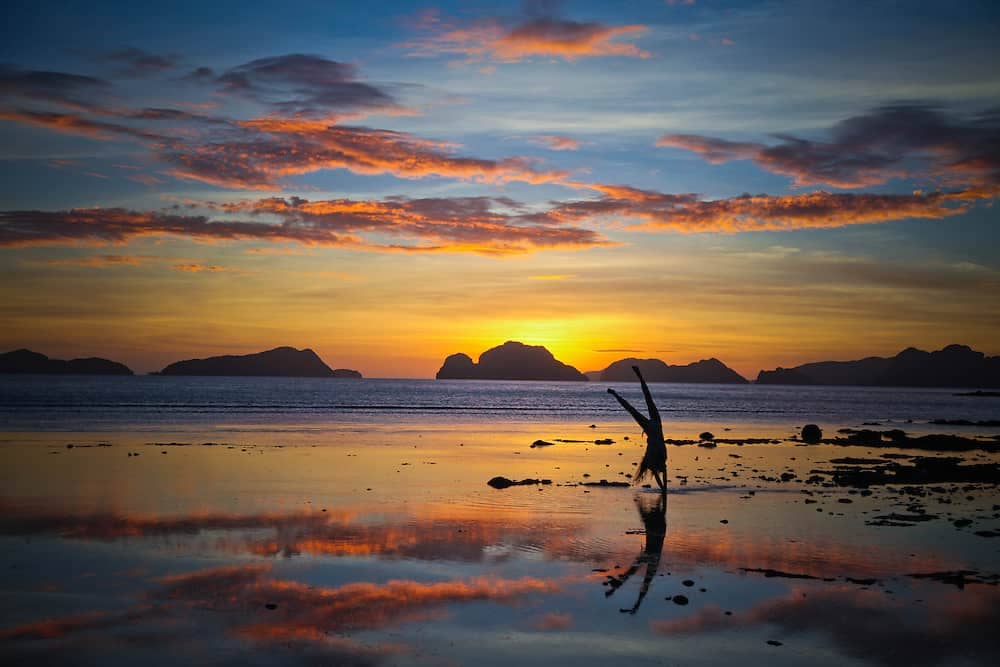It can truly be a magical experience to get away from the city into the countryside, away from the city lights, to witness the abundance of stars in the sky in all their glory. This is even more so in the SouthEast Asian sky, having experienced the difference from the country of my roots, Canada. I’ve even seen the beautiful Northern Lights for a couple of summers while up in the Yukon, next to Alaska, but I do not remember ever seeing stars in such brilliant abundance as I have during my stay in the remote areas of Palawan between El Nido and Coron. If you’d like help seeing these wonders of nature, feel free to send me a note and we’ll get you set up for a wonderful experience.
When is the best time to see bioluminescent plankton in the Philippines
The best time to see bioluminescent plankton in the Philippines is typically during the warmer months, from April to June. These months provide optimal conditions with warmer water temperatures and clearer skies, enhancing the visibility of the bioluminescence. Popular spots to witness this natural phenomenon include Puerto Princesa in Palawan, Siargao Island, and Donsol in Sorsogon.

What makes the midnight sky even more breathtaking is that during these times, as you wade into the warm waters of the sea during the darkness of the night, away from the bright city lights, the plankton light up around your feet, mirroring the magnificence above while dancing in the wavy waters below.

And imagine you have experienced this after sitting around a campfire with your loved ones, on a beautiful, remote beach, while waiting for and watching the sun set.
We specialize in private custom multiday boat tour expeditions between El Nido and Coron, as well as private custom single day boat tours around El Nido and Coron.
These are two popular tourist destinations, but most visitors take a fastcraft ferry between the two, missing all the jewels in between, instead only watching a ghost of them through the scratched up plastic windows of the ferry as they pass hurriedly by.
For a glimpse of what such a multiday tour will offer you, check out our expeditions page, or send us a note so we can send you all the information and start to work towards designing the perfect private custom tour for you.
Why there are more stars in the sky of southeast Asia than in Europe or North America
The night sky is a beautiful spectacle that has fascinated humanity for millennia. When we gaze up at the stars, we are reminded of our place in the universe and the vastness of space. However, not all parts of the world offer the same view of the night sky. In fact, if you travel to southeast Asia, you’ll notice that there are more stars in the sky than in Europe or North America. But why is that?
The first reason for this difference is the latitude of southeast Asia. The closer you are to the equator, the more stars you can see. This is because the Earth’s rotation causes the stars to appear to move around the celestial pole, which is directly overhead at the equator. As you move further away from the equator, the celestial pole appears to move closer to the horizon, which means fewer stars are visible.

Another factor is the level of light pollution in different regions. Light pollution is the artificial brightness of the night sky caused by human-made sources, such as streetlights and buildings. In densely populated areas like Europe and North America, light pollution is much more significant than in southeast Asia. This excess light drowns out the light from the stars, making it much harder to see them.
Southeast Asia also benefits from its geography. The region is home to many mountainous areas that are far away from urban centers. These high-altitude locations offer a clear view of the sky without any interference from light pollution or atmospheric conditions. Additionally, southeast Asia has a warm and humid climate, which creates a stable atmosphere that allows for better stargazing.
Lastly, the lack of air traffic in southeast Asia also contributes to the region’s clear skies. Aircraft produce a significant amount of light pollution, especially during takeoff and landing, and the flight paths in Europe and North America are much busier than those in southeast Asia. As a result, the night skies in southeast Asia are less disrupted by the movement of planes and the associated light pollution.

In conclusion, southeast Asia offers an unparalleled view of the night sky, with more stars visible than in Europe or North America. This is due to a combination of factors, including the region’s proximity to the equator, lower levels of light pollution, mountainous terrain, stable climate, and lower air traffic. If you’re a stargazing enthusiast, southeast Asia should be on your list of places to visit!
How do plankton generate light
Plankton, which are tiny organisms that float in the ocean, generate light in a process known as bioluminescence. This ability to produce light is widespread among marine organisms, including fish, jellyfish, and squid. Bioluminescence is a fascinating phenomenon that has captured the attention of scientists for decades, and it has many different functions in the marine environment.

The process of bioluminescence in plankton is controlled by an enzyme called luciferase, which catalyzes a chemical reaction that produces light. The specific chemical reaction that occurs depends on the type of plankton involved. For example, some plankton produce light by mixing two chemicals together, while others use a protein called a photoprotein to produce light.
The most common type of bioluminescent plankton is dinoflagellates. These tiny organisms are single-celled algae that live in the ocean and are responsible for the glowing waters that are often seen at night. When dinoflagellates are disturbed, they produce a bright blue-green flash of light, which is thought to be a defense mechanism against predators. The flash of light is also used to attract prey, as it can be used to lure fish and other organisms towards the plankton.

Other types of plankton, such as copepods and krill, also produce light. These organisms have light-producing cells called photocytes that are found in special organs in their bodies. When stimulated, these cells produce a bright burst of light, which is used to deter predators or to attract mates.

Bioluminescence in plankton has many different functions, and it is a vital part of the marine ecosystem. It helps to regulate the food chain, as many predators rely on bioluminescent prey to survive. Bioluminescence also plays a role in the carbon cycle, as it helps to distribute nutrients and organic matter throughout the ocean.
In conclusion, plankton generate light through a complex chemical process called bioluminescence. This ability is controlled by an enzyme called luciferase, and it is used for a variety of different functions, including defense, attraction, and communication. Bioluminescence is an essential part of the marine ecosystem, and it plays a critical role in regulating the food chain and the carbon cycle. Understanding the mechanisms behind bioluminescence in plankton is crucial for understanding the workings of the ocean and the creatures that inhabit it.
Book a Bioluminescent Plankton Tour
If you’d like to experience the magic of such a light show while hopping from one beautiful white sand beach island to another, in a remote part of the Philippines, Palawan, voted internationally as the most beautiful island in the world with the clearest waters, let us organize a private custom tour for you!

Experience the thrill of
island hopping boat tours in the Philippines.
Frequently Asked Questions – Bioluminescent Plankton & Star Gazing in Palawan
What is bioluminescent plankton and why does it glow?
Bioluminescent plankton, mostly dinoflagellates, emit blue-green light through a chemical reaction facilitated by luciferase enzymes. This creates a magical shimmer in the water when disturbed, often used as defense or to attract mates.
When is the best time to see bioluminescent plankton in Palawan?
The prime time is during the warmer months, usually April to June, when sea temperatures are high and conditions are clear—ideal for vivid bioluminescence.
Where in Palawan can I experience this glowing phenomenon?
Top spots include Puerto Princesa’s Iwahig River, El Nido, Coron, and nearby islands. Kayak and boat tours frequently include firefly and star-gazing segments. Between El Nido and Coron is also nice, since it is away from the city lights, so everything is much more visible in the dark.
Can I swim with the glowing plankton or is it just a boat or kayak view?
Swimming or kayaking through bioluminescent waters is popular, especially in calm lagoons and mangroves. Many guided night tours allow you to dip your hands or feet into the water to activate the glow.
Will strong moonlight affect the visibility of plankton and stars?
Yes! Bright moonlight can wash out the glow and diminish stargazing. Tours scheduled near a new moon or when skies are darkest will offer the most dazzling displays.
Is it safe to do bioluminescent night tours in Palawan?
Generally yes—these are guided eco-tours with our local operators. Still, watch for slippery areas, wear appropriate footwear, and avoid products like sunscreens or sprays that might harm delicate organisms.
Are jellyfish or other marine creatures a risk during these nights?
While encounters with jellyfish larvae can occur, sightings are rare—and guides typically use eco-friendly lighting and avoid disturbing wildlife.
How can I help preserve this natural phenomenon?
Support our conservation-focused tours, avoid polluting the water, refrain from wearing chemicals like sunscreens, and follow the “leave no trace” principle to protect the fragile plankton ecosystem.
Do all night tours include fireflies and stargazing with the plankton?
Some do—especially around Puerto Princesa and Coron. Tours often combine paddle‑based plankton experiences with firefly‑lit mangroves and clear night skies.
What makes Palawan’s night sky so special for stargazing?
Palawan’s low light pollution, equatorial location, and remote islands create crystal-clear, star-filled skies. The combination with glowing plankton and fireflies makes for a breathtaking natural show.
Palawan marine life links |
|---|
| Dugong / Sea Cows |
| Blacktip Reef Sharks |
| Whale Sharks |
| Manta Rays |
| Sea Turtles |
| Bioluminescent Plankton |
Our reviews:

Home » Palawan » Explore »
You may also like:
We are a family operation managing private custom boat tours in the beautiful Palawan area, and are happy to help travelers with their plans through the country, having traveled a lot of it ourselves and planning to visit it all.











